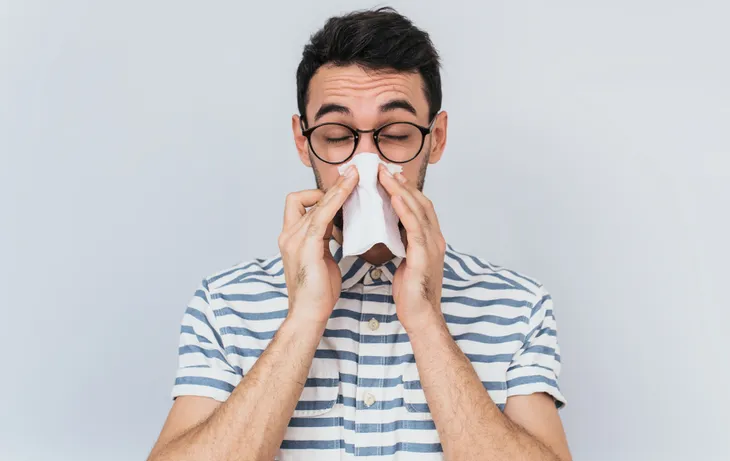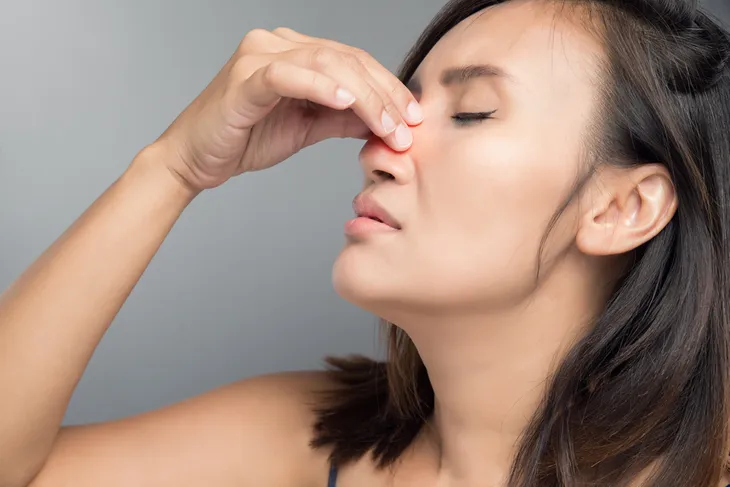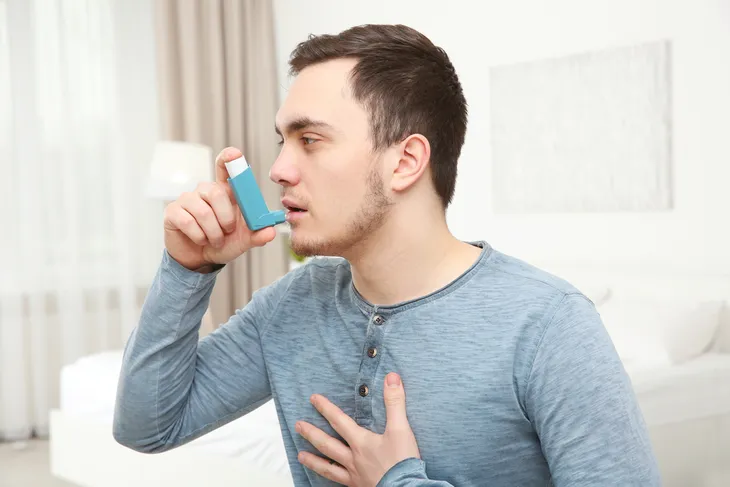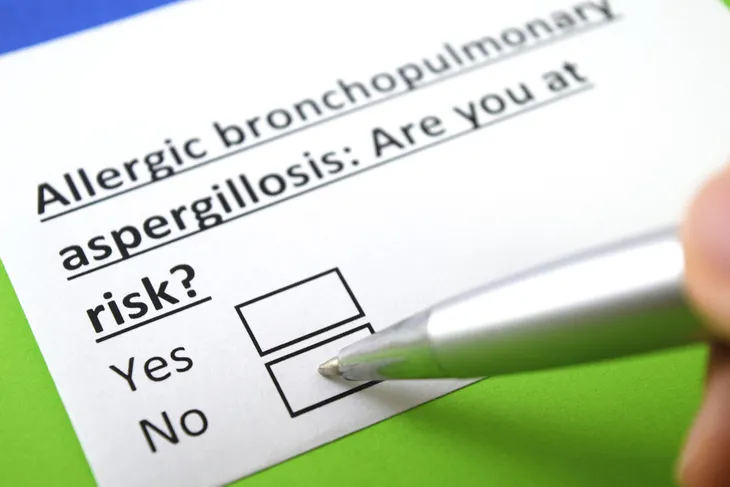Mold is literally everywhere — in our homes, outside, and even in our food. However, while it sometimes goes unnoticed to many, some Americans might be exposed to higher amounts of mold or have a sensitivity to it.
Your home is a prime place for mold to grow, especially if you have a damp basement. You should also try avoiding certain foods, if it’s determined you have mold sensitivity. Here are 13 health effects that prolonged mold exposure can have on you…
1. Chronic Sinus Problems
If you have a chronically irritated or stuffy nose, it may due to mold, especially if you don’t have any other symptoms. EveryDay Health noted that a study found up to 90-percent of chronic nasal problems could be traced back to mold in the home and workplace.
However, the online health source notes it’s still difficult to determine the difference between sniffles caused by a moldy environment and those caused by a cold or other upper respiratory infection. Your doctor can do a test to see if you have fungal sinusitis, which may require minor surgery to clear, according to EveryDay Health.
2. Nosebleeds
A nosebleed (referred to clinically as “epistaxis”) can be caused by a variety of factors (such as trauma from nose picking), but it can be something as simple as dryness in your home. However, mold can also cause your nose to bleed.
Pay special attention to nosebleeds, especially if you’re not the type to get them usually or your environment has changed recently. Using bleach-based cleaning products and ventilating your home cause help reduce the risk of symptoms, such as nosebleeds.
3. Hypersensitivity Pneumonitis
According to the Cleveland Clinic Center for Continuing Education, exposure to toxic molds can cause hypersensitivity pneumonitis in rare cases. The clinic describes this condition as “a complex condition of varying intensity, clinical presentation, and natural history” and is a result of inflammation of the lungs due to breathing impurities.
The Cleveland Clinic noted that a previous study in New Mexico from 1988 to 1990 showed only 0.3 cases per 100,000 people per year of this hypersensitivity (if you extrapolate the figures, that’s about one case per 300,000 people). A similar study later in the UK showed 0.9 cases per 100,000 people a year.
4. Mold-Induced Asthma
The Mayo Clinic notes that people with asthma can have a “flare-up” if they breathe in airborne mold spores. It’s important to have “an emergency plan” in place if you have both asthma an allergy to mold, as the reactions can be severe, noted the clinic.
Even if you don’t have asthma, airborne fungus can cause breathing problems, such as wheezing. If you have shortness of breath or other respiratory ailments without an obvious trigger, it may be wise to visit your doctor.
5. Skin Infections
A particular mold called Sporothrix schenckii (which is closely related to the mold in bread and beer) can cause a skin infection called sporotrichosis, according to WebMD. The infection can be caused by mold spores entering the body through a puncture wound, according to the online source.
In some rare instances, cats may be carrying the fungus, and the spores could also be inhaled, according to the article. The initial symptoms once contracted by a human include a firm skin bump, which can become an open sore over time.
6. Neurological Problems
Extreme Health Radio details a case of a person that suffered mold toxicity that affected her brain in a major way. The toxicity to the brain (neurotoxicity) wasn’t responding to standard medications, said the article, which also noted the patient lost motor and cognitive functions.
While this particular case was resolved through diet and product changes, other websites also mention “toxic mold syndrome,” which mimics symptoms of depression and anxiety while leaving an individual feeling listless. Fortunately, the same sources indicate the patients came to a positive resolution after pinpointing the mold sensitivity.
7. Rashes
Livestrong.com notes exposure to black mold (the bad stuff) can show up as skin symptoms, namely a rash in the form of mild to moderate pink and brown areas anywhere on the skin.
“These rashes may itch, although they do not always, and may go away and reappear periodically,” adds the source.
8. Fatigue
A website called Mold-Answers.com explains your chronic feelings of fatigue may be the result of mold exposure. “While respiratory symptoms are often rapidly attributed to mold, people are not so quick to attribute fatigue to the presence of mold in the home,” it adds.
The reason mold exposure causes fatigue, especially over longer periods of time, is that other symptoms (such as coughing) may disrupt your sleep. Asthma attacks from mold can be draining, and illnesses such as pneumonia triggered by mold exposure can cause fatigue.
9. Aches and Pains
The Kaplan Center for Integrative Medicine says there are “painful” symptoms of mold toxicity that mimic other diseases such as fibromyalgia, migraines, and even rheumatoid arthritis.
Because pain from mold poisoning closely resembles pain from other conditions, including celiac disease and irritable bowel syndrome (IBS), it’s often overlooked as the culprit, adds the source. Conventional treatments will not be as effective if mold is the cause of pain and there’s no plan for detoxification.
10. Watery Eyes
If you find your eyes are constantly watering inside your home and you haven’t been watching dramatic soap operas, then it could very well be an allergy – an allergy to mold, in particular.
The Mayo Clinic explains that mold spores can trigger an immune response like any other type of allergy, spiking levels of histamine that can cause itchy, watery eyes and a runny nose.
11. Allergic Bronchopulmonary Aspergillosis
According to the American Academy of Allergy Asthma & Immunology, this condition is characterized by an allergic reaction to a specific fungus called Aspergillus fumigatus that grows in soil (including indoor plants) and rotting vegetables.
An immune response from this fungus is rare among people with a healthy immune system. However, in others, the immune system can overreact to the mold toxins that have found their way to the lungs, which “may damage the airways and result in permanent lung damage,” adds the source. Those with asthma or cystic fibrosis are at especially high risk.
12. Sore Throat
If you have a sore, scratchy throat often and don’t know why, then mold spores floating in the air may be causing it. Sponaugle Wellness Institute in Florida explains a persistent sore throat is a red flag for mold toxicity.
This is because mold spores and related toxins irritate mucous membranes in the throat, “leaving it feeling uncomfortable or even painful,” adds the source.
13. Nausea and Vomiting
Being at home can literally make you sick if you have black mold lingering about. The same source says that prolonged or excessive exposure to mycotoxins (produced by fungi) can “eventually” lead to “detrimental nausea and vomiting.”
This happens when your body’s immune system gets overwhelmed with the toxins from the mold, and it happens more quickly in those who have a known mold allergy. So, if you don’t know the reason why you feel sick often in your own home, see a doctor and consider getting a mold inspection.
















